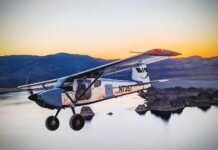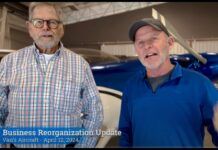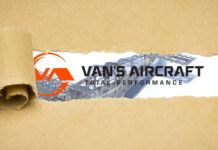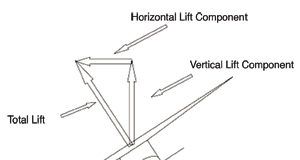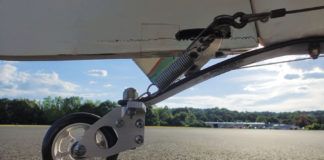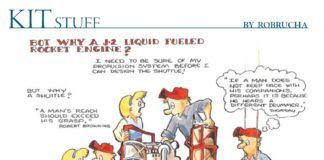
You are a rare person, participating in a unique hobby. You’ve seen the reactions when you tell people at Friday night pickleball tournaments that you’re building an airplane in your garage. They fall toward an extreme. ”Is that safe?” Or, “That is cool! I could never do that.”
We forget how unique this hobby is because we are immersed in it; our everyday friends are often pilots, maybe fellow homebuilders. It’s the ocean we choose to swim. Except it’s not an ocean, it’s a pond. A small pond.
How small? The number of active licensed pilots in the United States in 2017 was 609,306, or 0.18% of the total U.S. population (note the decimal point, it’s not 1.8%, it’s 0.18%). When you subtract from that number the number of pilots who want to own an airplane and can justify one, the pond shrinks significantly. From that subset, the vast majority will choose a production-line, general-aviation aircraft. The reasons are obvious: they are known entities; maintenance and repairs can be handed off to a certified mechanic, anywhere; they are relatively easy to buy, own, and sell; and they don’t need to be built.
Ah, there it is. Our pond is a puddle! We are pilots who can justify owning an airplane and are willing to put in the time and effort to build one. To outsiders that sounds like growing an oak tree from an acorn for the firewood.
To create and maintain this puddle, some bold people pour in products they hope can also sustain a business. Those products are airplanes, engines, and the products needed to unite them for flight. You and I can build an airplane in our garage—with no skills training requirements, no facilities inspection, no license or registration (until we finish), no hurdles at all, really, beyond those we impose on ourselves, such as money, space, time, and confidence. And it’s all because the array of Experimental designs we take for granted were poured into the puddle after great expense in time and money by other passionate aviators.
Even the largest and most successful kit-aircraft manufacturer, Van’s Aircraft, is a small business in this puddle. In business since 1973, their customer completion rate averages 229 aircraft per year. To put perspective on that impressive number, in 2017 Ford produced 331 Mustangs per day, 120,800 for the year. Just Mustangs. I’m in awe that I can go to a car parts store for a specific Jeep part and it’ll be on the shelf. It’s there because of a nationwide distribution system for parts that are produced in the hundreds of thousands—parts that will be produced for years to come—to meet the production and service needs of a huge fleet of vehicles.
Experiences like this skew our expectations when we need a part for an airplane project. It’s easy to forget the market for RV-3 root ribs is infinitesimally small, and there is only one source for them. Van’s cautions on its website, “The time from order to delivery of an RV-3 kit can be a number of months due to very limited production of this model, so be sure to contact Van’s to check on availability.” This great design, introduced in 1973, remains available to anyone who wants one, but you will need patience because it’s not arriving overnight. Kits are not lightbulbs, a commodity found in every household. Kit-aircraft manufacturers are not Ford, manufacturing each part by the hundreds of thousands. And these manufacturers are not Amazon, able to ship any part the same day it’s ordered. What they are is the water in our puddle.
Our puddle is small, but there’s room for everyone who wants to play in it. It’s more fun for everyone, though, when you know it’s a puddle and not an ocean. Builders are at the end of a long supply chain—kit manufacturers are in the middle—that can be interrupted for many reasons. Suppliers are often small businesses themselves, hand-crafting limited quantities of lightweight fiberglass parts that a large manufacturer wouldn’t even quote. Suppliers disappear, withdraw from particular markets, or decide that making 15 airplane widgets a year is no longer in their business interest. When an aluminum producer goes off line, aluminum aircraft components can become scarce. I recall when the large sizes of Sitka spruce necessary for wood wing spars became difficult to obtain because trees of the correct size were not available to harvest.
Your time in the puddle will be more enjoyable if you don’t wait until Friday afternoon to send an email that you want answered before the weekend; don’t arrange help or schedule vacation time to work on your project until you have the parts you need on hand; don’t schedule an airworthiness inspection until the airplane is truly done; and don’t put off required maintenance until a few days before a trip as you might find you can’t get the necessary parts in time. (Besides, rushed maintenance is poor maintenance).
What a cool thing we get to do, this airplane-building thing. I can start building an airplane in my garage tomorrow, without anyone’s permission, but I can’t replace a toilet in my home without getting approval from city hall. What a cool thing we get to do, this airplane-building thing. Keep that in mind when you interact with the kit designers, manufacturers, and suppliers to our hobby. They are, one and all, passionate aviators that chose a tiny puddle in which to make a splash. They did this for the best reason, for the same reason you chose to build an airplane: for the pure satisfaction of it.



